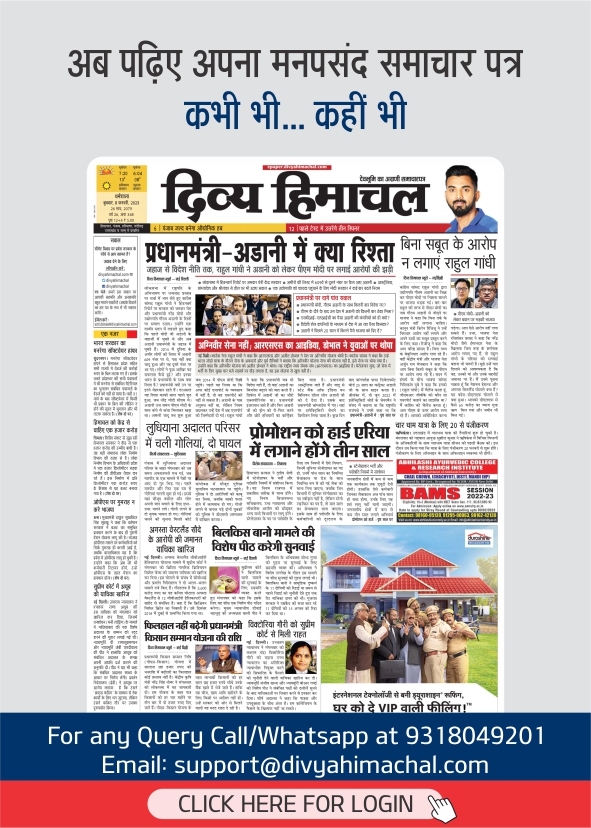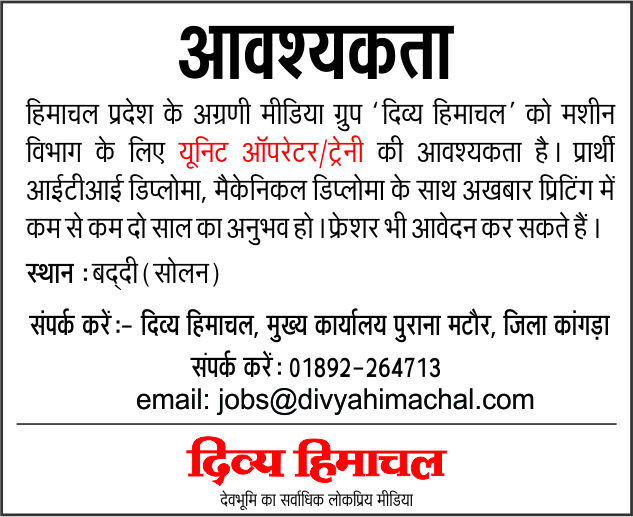Patel’s Vision for India’s Constitution
Bhanu Dhamija
Founder of Divya Himachal & Author of ‘Why India Needs the Presidential System’

* Had Patel’s plan not been rejected, India would now be a U.S. type federation, with a similar polity. Our state governments would be less dependent on central control, and have directly elected Governors.
Had Patel’s plan not been rejected, India would now be a U.S. type federation, with a similar polity. Our state governments would be less dependent on central control, and have directly elected Governors. India would be a participatory democracy, with decentralized governments that are more accountable to the people. And our political parties would be more centrist in their agendas.
Patel was asked by the Constituent Assembly to design India’s provincial governments. As soon as his Provincial Constitution Committee began work, it struggled with a basic question: Should India be a federation or a unitary state. It was June 1947 and Patel was in the thick of things, with respect to unifying the princely states into Independent India. He understood that state governments require independence and local accountability. But he also realized that the nation’s unity and integrity demand a strong center. Unable to reach a conclusion, Patel called for consultation with Nehru’s Committee which was tasked to devise the structure of the union.
Nehru’s Union Constitution Committee was equally perplexed. It too had concluded that “the Constitution should be a Federal structure with a strong Centre,” but couldn’t prescribe how this unique combination would work. In the joint meeting, the topmost leaders engaged in the making of India’s Constitution did come up with some specifics. They decided that “there should be a Governor at the head of every Province,” and “the Governor should be appointed by the Province, and not by the Central Government.” The following day, June 8 1947, Patel’s committee proceeded along this agreement. It decided that Governors would be elected directly by the adult franchise of each state. But Nehru’s committee prescribed that the nation’s President be elected indirectly, by the country’s legislatures.
This created a clash. The head of the federal government would be chosen by legislators, while the head of state governments by the people. K.M. Munshi, a member of both committees, intervened so that the Union and Provincial constitutions could be synced. He wrote to the Assembly’s President, Rajendra Prasad: “the question of the election of the President and the Heads of the Provinces is so interlinked, that the matter may well be considered in a joint meeting.” Prasad immediately called a second joint meeting.
* The differing visions of Patel and Nehru came to a final confrontation when the Assembly began adopting the Draft Constitution provisions. Ambedkar’s Drafting Committee had written an alternative clause for the selection of Governors, changing the method from direct election to appointment.
Held over a two-day period, June 10-11, the meeting was attended by 36 framers of our constitution: Nehru, Patel, Prasad, Munshi, B.R. Ambedkar, G.B. Pant, S.P. Mookerjee, J.B. Kripalani, Jagjivan Ram, A.K. Ayyar, to name just a few. Munshi later reported that after “a hot debate…by two or three votes the proposition that the President should be elected on the basis of adult franchise was carried.”Not only that, but the committee “decided by the majority vote to recommend to the Union Constitution Committee that they should reconsider their decision for the indirect election of the President.” Nehru never reconsidered. His committee, gathering only a few hours after that meeting, ignored the advice altogether.
This didn’t stop Patel from bringing the matter to the Assembly. On July 15 1947, Patel presented his plan for directly elected Governors, each with a Council of Ministers to “aid and advise,” but with discretionary powers. He acknowledged the difficulties involved in direct elections, but considered them necessary for the “dignity of the office.” He argued that a Governor thus elected “will exert considerable influence on the popular ministry as well as on the province as a whole.” An intense debate ensued, for many in the Assembly couldn’t see how this system of two elected officials – Chief Minister and Governor – would work. But considering the weight of Patel’s arguments, the Assembly adopted his formula.
The differing visions of Patel and Nehru came to a final confrontation when the Assembly began adopting the Draft Constitution provisions. Ambedkar’s Drafting Committee had written an alternative clause for the selection of Governors, changing the method from direct election to appointment. As drafting committee, it was unauthorized to do so. Some of the Congress party’s heaviest hitters were readily available to push for the change.
But not Patel. Apparently healthy and active, he was conspicuous by his absence from the Assembly. Members argued that a fundamental principle adopted after many days of debate, and at the insistence of a leader of Patel’s stature, should not be dropped without his involvement. Biswanath Das, a member nominated by Congress, caused an uproar when he insinuated that the party was having its own way, and that Patel wasn’t aware of these wholesale changes.
Nehru calmed the members. He rose to say that this change “should not appear to be a strange thing,” and that “even those like Sardar Patel, who themselves put forward in this House the other view, felt that a change would be desirable.” He cited three reasons: elected Governors would encourage separatist tendencies; they would become rivals to provincial governments; and elections would be difficult to hold. Once Nehru spoke, it was all over. Those who still wanted to debate were heckled, and the change was adopted.
This was the only reversal of a fundamental principle in the entire process of making India’s Constitution. Patel never disclosed in the Assembly that a joint meeting had decided that the President should be elected directly, instead of changing the method of selecting Governors.
Could Patel’s formulation have worked? Considering what the institution of appointed Governors has become, one can argue that elected Governors couldn’t be worse. If they became rivals to Chief Ministers, this would provide the much needed check on each other. And as for the separatist tendencies that Nehru feared, consider what Granville Austin, famous chronicler of India’s Constitution, reported at the time: “The forces for unity operating in the country were stronger and more numerous than the forces against unity.” Patel’s farsighted idea is still worthy of consideration.
* Could Patel’s formulation have worked? Considering what the institution of appointed Governors has become, one can argue that elected Governors couldn’t be worse. If they became rivals to Chief Ministers, this would provide the much needed check on each other.
Keep watching our YouTube Channel ‘Divya Himachal TV’. Also, Download our Android App













